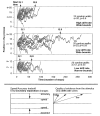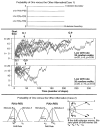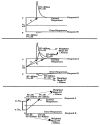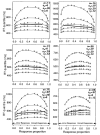The diffusion decision model: theory and data for two-choice decision tasks
- PMID: 18085991
- PMCID: PMC2474742
- DOI: 10.1162/neco.2008.12-06-420
The diffusion decision model: theory and data for two-choice decision tasks
Abstract
The diffusion decision model allows detailed explanations of behavior in two-choice discrimination tasks. In this article, the model is reviewed to show how it translates behavioral data-accuracy, mean response times, and response time distributions-into components of cognitive processing. Three experiments are used to illustrate experimental manipulations of three components: stimulus difficulty affects the quality of information on which a decision is based; instructions emphasizing either speed or accuracy affect the criterial amounts of information that a subject requires before initiating a response; and the relative proportions of the two stimuli affect biases in drift rate and starting point. The experiments also illustrate the strong constraints that ensure the model is empirically testable and potentially falsifiable. The broad range of applications of the model is also reviewed, including research in the domains of aging and neurophysiology.
Figures












References
-
- Ashby FG. A stochastic version of general recognition theory. Journal of Mathematical Psychology. 2000;44:310–329. - PubMed
-
- Ball K, Sekuler R. A specific and enduring improvement in visual motion discrimination. Science. 1982;218:697–698. - PubMed
-
- Bogacz R, Brown E, Moehlis J, Holmes P, Cohen JD. The physics of optimal decision making: A formal analysis of models of performance in two-alternative forced choice tasks. Psychological Review. 2006;113:700–765. - PubMed
-
- Buchanan L, McEwen S, Westbury C, Libben G. Semantics and semantic errors: Implicit access to semantic information from words and nonwords in deep dyslexia. Brain and Language. 2003;84:65–83. - PubMed
Publication types
MeSH terms
Grants and funding
LinkOut - more resources
Full Text Sources
Other Literature Sources

